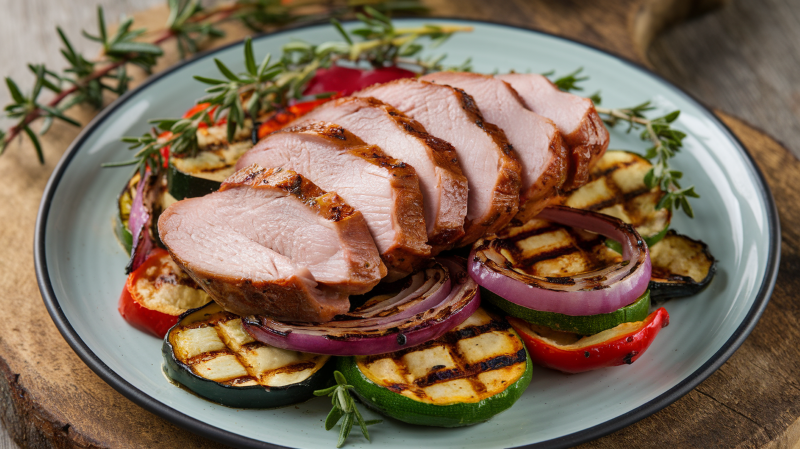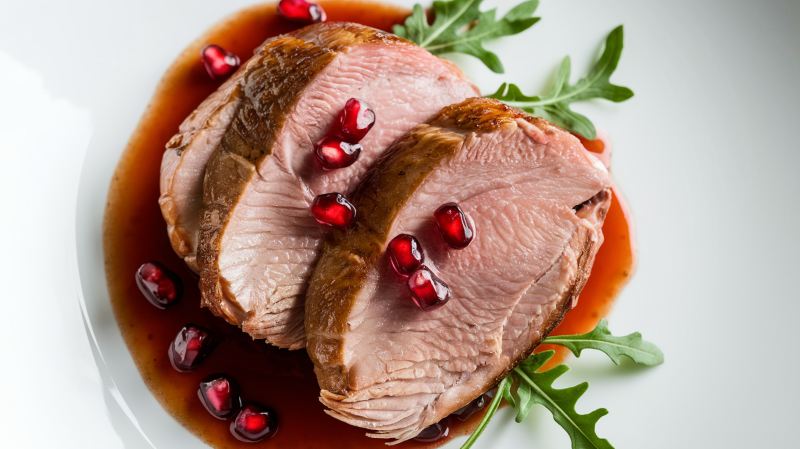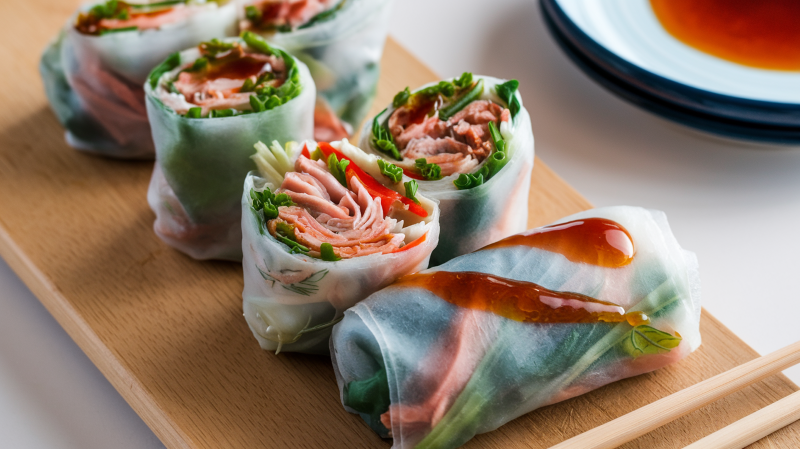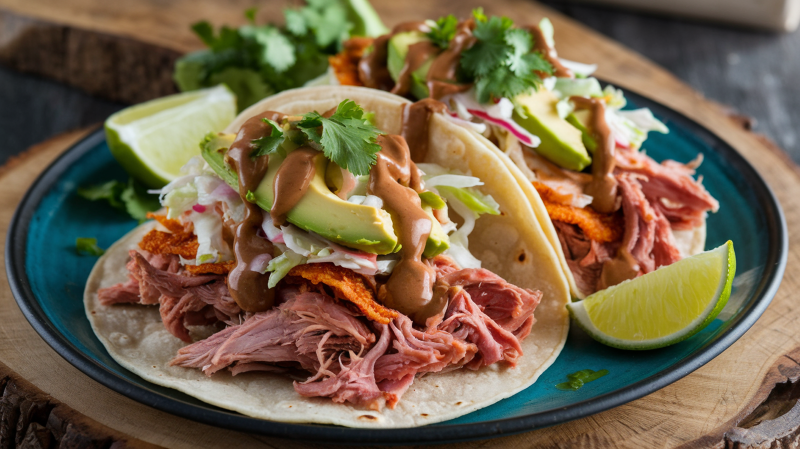Wondering about pollotarianism? This diet includes poultry as the only meat in an otherwise vegetarian meal plan. You'll eat chicken, turkey, and duck while skipping red meat, fish, and seafood. A pollotarian diet balances health benefits with flexibility, making it easier to follow than stricter vegetarian options.
Pollotarianism offers a middle ground between full vegetarianism and omnivorous eating. You get protein from poultry while still enjoying plenty of fruits, vegetables, grains, and plant-based proteins. This approach can help you cut back on red meat without giving up all animal products.
Many people choose pollotarianism for health reasons. Poultry is generally lower in saturated fat than red meat. It's also rich in protein and nutrients like vitamin B12. By combining poultry with lots of plant foods, you create a varied diet that can support your health goals.
Origins of Pollotarianism
Pollotarianism emerged as a dietary choice that blends vegetarian practices with poultry consumption. This eating pattern arose from a desire to reduce meat intake while still including some animal protein.
Differentiation from Other Diets
Pollotarianism sets itself apart from other eating styles. Unlike vegans, pollotarians eat poultry. They differ from flexitarians by excluding red meat and fish. Pesce-pollotarians add fish to their diets, while pollotarians stick to poultry only.
You might choose pollotarianism as a step between being a meat-eater and a vegetarian. It lets you cut back on meat without giving it up completely. This can make the switch to a plant-based diet easier for some people.
Historical Context
The exact origins of pollotarianism are not well-documented. It likely developed as people looked for ways to eat less meat. Health concerns about red meat may have pushed some to choose poultry instead.
In recent years, more attention has focused on plant-based diets. This has led to a rise in semi-vegetarian options like pollotarianism. As awareness of meat's impact on health and the environment grew, so did interest in diets that reduce meat intake.
Pollotarianism offers a middle ground. It lets you keep some meat in your diet while moving towards more plant-based eating.
Health Benefits and Risks

A pollotarian diet can offer several health advantages but may also come with some potential drawbacks. Focusing on poultry and plant-based foods while limiting red meat can impact your health in various ways.
Nutritional Profile of a Pollotarian Diet
Poultry is a good source of protein, vitamins, and minerals. It's lower in saturated fat compared to red meat. This diet also emphasizes fruits, vegetables, whole grains, and legumes. These foods provide fiber, antioxidants, and other essential nutrients.
Key nutrients in a pollotarian diet:
- Protein
- B vitamins
- Iron
- Zinc
- Vitamin C
- Folate
You'll get a mix of nutrients from both animal and plant sources. This balance can help meet your nutritional needs while keeping saturated fat intake in check.
Reducing Disease Risk
A pollotarian diet may lower your risk of certain health problems. By eating less red meat, you can reduce your intake of saturated fat. This may help lower your cholesterol levels and decrease your risk of heart disease.
Some studies suggest that this eating pattern might also:
- Lower your risk of type 2 diabetes
- Help with weight management
- Reduce your cancer risk, especially colorectal cancer
The high fiber content from plant-based foods can aid digestion and help you feel full. This may make it easier to maintain a healthy weight.
Potential Nutrient Deficiencies
While a pollotarian diet can be healthy, you need to plan it carefully to avoid nutrient gaps. Some nutrients to watch out for include:
- Iron: Red meat is a rich source of iron. You can get iron from poultry, but plant sources are less easily absorbed.
- Vitamin B12: Found mainly in animal products, including poultry.
- Omega-3 fatty acids: These are abundant in fatty fish, which aren't part of a pollotarian diet.
You may need to eat more eggs, dairy, and plant-based sources of these nutrients. In some cases, supplements might be necessary. Talk to a doctor or dietitian to ensure you're meeting all your nutritional needs.
Environmental and Ethical Considerations

Choosing a pollotarian diet can have positive impacts on the environment and align with ethical values. The production of poultry tends to be less resource-intensive compared to other livestock while also raising fewer animal welfare concerns.
Sustainability and Food Production
Poultry farming uses less land, water, and feed than cattle ranching. This leads to lower greenhouse gas emissions. Chickens convert feed to meat more efficiently than cows or pigs. For every pound of chicken produced, about 2 pounds of feed are needed. Beef requires 6-8 pounds of feed per pound of meat.
Poultry also produces fewer methane emissions. Cows release large amounts of this potent greenhouse gas through digestion. Chickens don't have this issue.
You can further reduce your environmental impact by choosing organic or free-range poultry. These methods often use less energy and chemicals in production.
Ethical Treatment of Poultry
While not perfect, poultry farming tends to raise fewer ethical concerns than red meat production. Chickens require less space than larger animals like cows. This can lead to better living conditions.
Many farms now offer cage-free or free-range options. These give birds more space to move and express natural behaviors. Look for labels like "Certified Humane" or "Animal Welfare Approved" when shopping.
You can also choose local farms that allow visits. This lets you see the conditions firsthand. Supporting smaller producers often means better treatment for the animals.
Dietary Guidelines

A pollotarian diet focuses on poultry and plant-based foods while avoiding red and processed meats. This eating pattern aims to provide balanced nutrition through careful food choices and meal planning.
Incorporating Poultry and Plant-Based Foods
Choose lean poultry like chicken, turkey, and duck as your main protein sources. Aim for 2-3 servings per week. Pick skinless options and use healthy cooking methods like grilling, baking, or roasting.
Fill most of your plate with plant foods:
- Vegetables: Eat a variety of colors daily
- Fruits: 2-3 servings per day
- Whole grains: Brown rice, quinoa, oats
- Legumes: Beans, lentils, chickpeas
- Nuts and seeds: Small portions for healthy fats
These foods provide fiber, vitamins, minerals, and antioxidants. They help keep you full and support good health.
Avoiding Red and Processed Meat
Cut out beef, pork, lamb, and other red meats from your diet. Also, avoid processed meats like bacon, sausage, and deli meats. These foods are linked to health risks when eaten often.
Replace red meat with:
- Extra servings of poultry
- Plant proteins like beans or tofu
- Fish (if you eat seafood)
Read labels carefully. Some products contain hidden meat ingredients.
Sample Meal Plan
Breakfast: Oatmeal with berries and nuts
Lunch: Grilled chicken salad with mixed greens, veggies, and vinaigrette
Dinner: Turkey and vegetable stir-fry with brown rice
Snacks:
- Apple slices with almond butter
- Carrot sticks and hummus
- Greek yogurt with seeds
Adjust portion sizes to fit your needs. Drink plenty of water throughout the day. This meal plan gives you a mix of poultry and plant foods while skipping red meat.
Practical Tips for Following a Pollotarian Diet

Adopting a pollotarian diet can be simple with the right approach. Focus on buying poultry and plant-based foods, and learn to cook tasty meals at home. When eating out, look for chicken or turkey dishes and veggie sides.
Shopping and Meal Preparation
Start by making a grocery list with chicken, turkey, and lots of fruits and veggies. Buy whole grains like brown rice and quinoa for fiber. Get healthy fats from olive oil, avocados, and nuts.
Plan your meals for the week. Cook extra chicken to use in salads and sandwiches. Try new recipes like grilled chicken with roasted veggies or turkey chili.
Keep frozen veggies and canned beans on hand for quick meals. Make big batches of soup or stew to freeze for busy days.
Try meat-free days with eggs or beans as protein. Add variety with different spices and cooking methods for your poultry dishes.
Dining Out as a Pollotarian
Look at menus online before you go out to eat. Many places have chicken or turkey options. Pick restaurants with salad bars or lots of veggie sides.
Ask for grilled chicken instead of beef in salads or sandwiches. Choose vegetable-based soups over cream-based ones.
Don't be shy about asking how food is prepared. Request no bacon bits on salads or sauces on the side.
At fast food places, go for grilled chicken sandwiches or salads. Skip the mayo and cheese for healthier choices.
Bring snacks like nuts or fruit when you're out. This helps if you can't find good pollotarian options.
Conclusion

The pollotarian diet offers a balanced approach to eating. You can enjoy poultry while reducing red meat intake. This flexible plan provides health benefits and supports sustainability.
By choosing poultry and plant-based foods, you get essential nutrients. Your meals will include fruits, vegetables, whole grains, and nuts. This variety helps meet your nutritional needs.
Pollotarianism may lower your risk of certain health issues. It can help with weight management and blood sugar control. The diet is also linked to better heart health.
You can easily adopt this eating style. It doesn't require strict rules or eliminating many foods. This makes it more sustainable long-term.
Remember to focus on whole, unprocessed foods. Choose lean poultry options and cook them in healthy ways. Fill your plate with colorful vegetables and fruits.
The pollotarian diet can fit different lifestyles and goals. It's a practical choice if you want to reduce meat consumption without going fully vegetarian. You can customize it to suit your preferences and nutritional needs.


